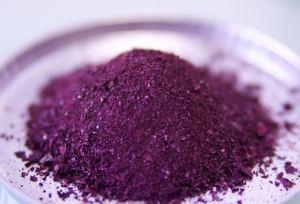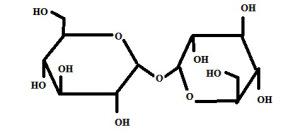 When we think of the word stasis, many of us think of science fiction movies and novels where people willingly put themselves inside little pods in spaceships. When the astronauts enter the pods, there is a familiar hissing noise, and they enter a dreamless sleep for years while in transit to some distant planet or star system. Most notable stories that come to mind are those of Alien and 2001: A Space Odyssey.
When we think of the word stasis, many of us think of science fiction movies and novels where people willingly put themselves inside little pods in spaceships. When the astronauts enter the pods, there is a familiar hissing noise, and they enter a dreamless sleep for years while in transit to some distant planet or star system. Most notable stories that come to mind are those of Alien and 2001: A Space Odyssey.
In reality, technological advancement has made leaps in storing biological materials for long periods of time. We only need to look as far as our supermarkets to discover the culmination of our scientific prowess. Canned soups can survive for years, and freeze dried beans, rice, and noodles have a potential storage life of decades if kept in a dry environment.
However, there are many shortcomings with freeze-drying that must still be overcome. Dried food doesn’t taste the same, and often loses much of its caloric value. Notably, blood and platelets, which are critical in emergency rooms, are constantly in short supply because they simply cannot be stored using today’s techniques. Platelets have a five day lifespan, so if they are not used, they must be discarded [1]. Freezing or drying, in the normal way, will simply destroy the cellular structure. We’ve all seen a similar effect on frozen meat and poultry.
What about the transport of transplant tissue? Although, in some cases such as Islet of Langerhans cells in the pancreas which promote the synthesis of insulin in beta-cells, DMSO (dimethyl sulfoxide) is currently used to maintain the tissue cell structure during transport, only 58% of cells survive using this technique [2]. This increases the need for multiple donors in order to certain types of diabetes. Obviously, whole organs are even more cumbersome a target for preservation. After all, a 58% functioning kidney is not what you can call a fully functional functioning kidney.
What does Trehalose do?
Researchers over the past couple of decades have been studying anhydrobiotic (can survive in the absence of water) plants and animals. Some organisms, such as the Tardigrade (or Water Bear), have been known to survive decades in a suspended state during arid conditions. Then, when fairer climate prevails and moisture returns to the habitat, the Tardigrade would simply rehydrate and continue to function normally [3]. This remarkable ability for preservation has surprised scientists for some time.
In the 1990’s, it was discovered that a disaccharide called Trehalose was the molecule which gave Tardigrades such amazing preservative properties.
Since that time, numerous research projects have been looking to not only understand why Trehalose works so well, but also how its properties can be applied for use in the biomedical field.
It has been found that when platelets are heated to 37 degrees C in a solution containing Trehalose, the cells endocytotically take up the disaccharide. When these treated platelets are then freeze dried and subsequently rehydrated, 85% are still viable and function in the same manner as untreated platelets [1]. This will significantly improve the shortage issue that plagues our hospitals.
As I mentioned previously, preserving Pancreatic islet cells for transplant is only 58% effective in DMSO. However, rehydrated Islet cells that were preserved in Trehalose have shown 92% efficacy. This is a huge difference and will ultimately decrease the demand for multiple donors [2] to treat some diabetes sufferers.
Even the transport of biological materials, such as lyophilized bacteria has been shown to have greater efficacy. This allows scientists to transport smaller quantities of live bacteria, while increasing productivity and decreasing cost in growing the said bacteria. When Trehalose saturated E. coli DH5 and B. thuringiensis HD-1 were dried and reconstituted, 70% of E.coli cells, and 57% of B. thuringensis cells survived, compared to 8% and 14% untreated controls [4].
Trehalose treated cells are furthermore able to withstand greater temperature stresses when dried. This has much to do with Trehalose’s ability to stabilize a cell membrane [5]. This is an important effect because transgenic (GMO) rice, which was modified to increase Trehalose production by 3-10 times, increased the rice plant’s photosynthesis capability [6]. This indicates there are some complicated regulatory mechanisms which are being effected, alongside the preservative benefit of Trehalose.
The increase in Trehalose allows the plant to become more resistant to environmental stresses, and thus survive possible droughts. Since global warming is making the climate less predictable, this may help prevent mass die-outs of staple foods.
How does Trehalose work?

About the Author : Anton S. Power received his Bachelors of Science in Biochemistry from the California State University-East Bay, after which he interned and subsequently worked at the Lawrence Livermore National Laboratory as a research associate at the Bioscience and Biotechnology Division. He is currently a Clinical Data Specialist at ZELTIQ Aesthetics in Pleasanton, California, and a 2013 matriculating student at the University of New England College of Osteopathic Medicine where he is expected to receive his medical degree in 2017.He is also an active blogger, and a gourmet food and physical fitness enthusiast.
References
[1] Wolkers, W.F., Walker, N.J., Tablin, F., Crowe, J.H. (2001) Human platelets loaded with trehalose survive freeze-drying. Cryobiology, 42 (2), 79-87. Retrieved from http://www.ncbi.nlm.nih.gov/pubmed/11448110
[2] Beatie, G.M., Crowe, J.H., Lopez, A.D., Cirulli, V., Ricordi, C., Hayek, A. (1997) Trehalose: A cryoprotectant that enhances recovery and preseres function of human pancreatic islets after long-term storage. Diabetes, 46 (3), 519-523. doi: 10.2337/diab.46.3.519 http://diabetes.diabetesjournals.org/content/46/3/519.short
[3] Anthes, E. (2012, November 21). ‘resurrection’ feat gives hope for future vaccines . BBC-Future. Retrieved from http://www.bbc.com/future/story/20121120-jab-hope-for-resurrection-trick/2
[4]Leslie, S.B., Isreali, E., Lighthart, B., Crowe, J.H., Crowe, L.M. (1995) Trehalose and sucrose protect both membranes and proteins in intact bacteria during drying. Microbiology, 61 (10), 3592-3597. Retrieved from http://aem.asm.org/content/61/10/3592.short
[5] Crowe, J.H., Crowe, L.M., Chapman, D. (1984) Preservation of membranes in anhydrobiotic organisms: the role of trehalose. Science, 223 (4637), 701-703. doi: 10.1126/science.223.4637.701 http://europepmc.org/abstract/MED/17841031
[6] Garg, A.K., Kim, J.K., Owens, T.G., Ranwala, A.P., Choi, Y.D., Kochian, L.V., Wu, R.J. (2002) Trehalose accumulation in rice plants confers high tolerance levels to different abiotic stresses. PNAS, 99 (25), 15898-15903. doi: 10.1073/pnas.252637799 http://www.pnas.org/content/99/25/15898.short
Image Courtesy : http://www.fotopedia.com/items/GLpxIf4jnoA-mPnFPqvKu9M
Editor’s Note: This is a guest post and the views expressed in the article are solely that of the author. The incidents about patient experiences (if any) stated in this blog are highly fictionalised and any resemblance to any person(living or dead)and/or incident is purely co-incidental

